Foldable boat equipment. Folding Boat Equipment (FBE)
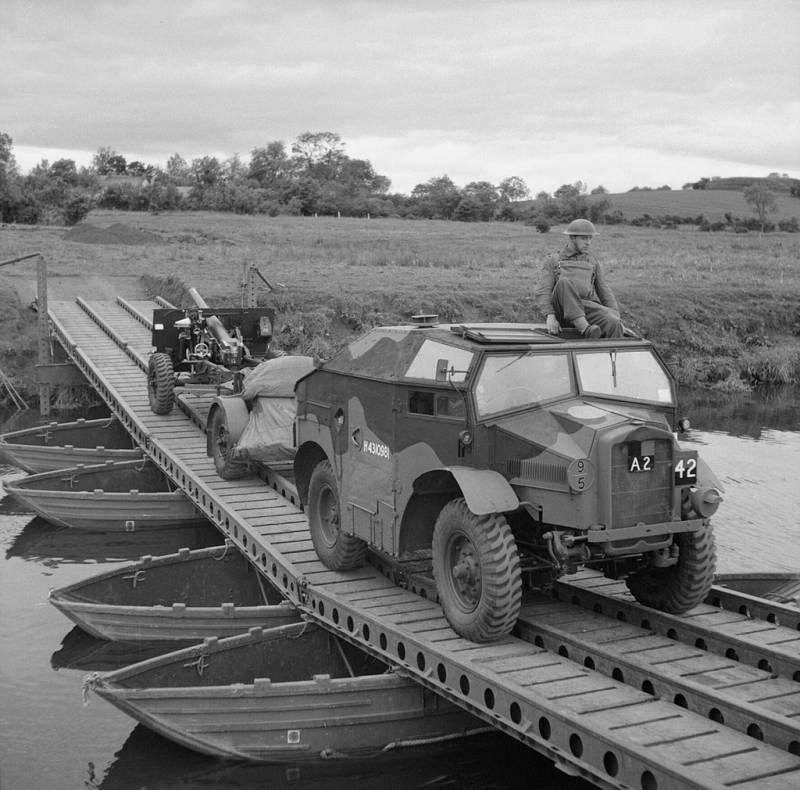
The Morris Commercial C8 FAT artillery tractor with a 25-pounder howitzer cannon moves along a pontoon ferry.
Even the ancient armies faced the need to cross various water barriers. One of the oldest options for military bridge equipment appears to be the pontoon bridge. Pontoon crossings in the form of a "boat bridge" have been used since the days of Ancient Rome and Ancient Greece. So, during the First Dacian War in 200 BC, Roman military engineers coped with the task of building a large pontoon bridge over the Danube.
The pontoon bridge built by the Romans rested on boats. In their simplest form, pontoons in those years were a kind of set of boats that were shallow in the water, which were connected to each other, a deck or flooring was installed on top of the boats. Such a pontoon was erected on rivers and canals and used to transport troops and goods. The reality is that since then there have been no significant changes in the organization of pontoon crossings. The changes mainly affected the materials used and the overall load capacity of the structures.
Following a similar principle in the UK, in the period before World War II, a whole series of light pontoon bridges were created under the designation Folding Boat Equipment, or FBE for short. Literal translation - folding boat equipment or folding boat equipment.
Such lightweight pontoon bridges proved to be effective engineering equipment, widely used by the British army, as well as by the armies of the Dominions. For example, Canadians, during the Second World War in various theaters of military operations. Used these transportable and easily installed structures and the US military.
Foldable Boat Equipment (FBE)
Folding boat equipment is the name of a British transportable bridge system that could be used as a pontoon bridge, raft, ferry, or general purpose boats. The design, which received the British designation Folding Boat Equipment (FBE), was introduced in the late 1920s and fully satisfied the needs of British military engineers.
This engineering equipment was mass-produced in Great Britain all the pre-war years and was modernized several times. By the beginning of the war, there were three modifications of folding boat equipment in service.
These lightweight pontoon bridges were widely used by the British military throughout the Second World War, both in the European theater of operations and in Asia. Along with the modular bridges and Bailey pontoons, the FBE lightweight pontoon bridges provided invaluable assistance to the Allied forces in the liberation of Western Europe from fascism.
Despite the fact that the design of the FBE was extremely successful and was widely used by military engineers of the British and Canadian armies, as well as by American troops, the general public knows little about these amphibious vehicles.
Folding Boat Equipment was adopted in 1928. The lightweight pontoon bridge was designed to provide the fastest possible transfer of light vehicles, artillery and infantry to the other side of water bodies in order to immediately support assault teams. Deploying such pontoon bridges on the ground took much less time than deploying heavy pontoons capable of supporting the weight tanks and other heavy tracked vehicles.
In the mid-1930s, the design was slightly improved. The new version received the designation Folding Boat Equipment Mk. II.
The difference with the Mark I variant was minimal: the bridge girders were wider, and the wooden ramp conveyor belts were replaced with steel ones. At the same time, the carrying capacity of the raft being assembled has slightly increased.
The most common version was the Mark III, created in 1939 and actively used throughout the war years. The steel guides, supports and overpasses introduced into the structure made it possible to organize light ferry bridges capable of handling equipment weighing up to 9-10 tons.
Composition and application possibilities of Folding Boat Equipment
The basis of the entire set of landing equipment was made up of foldable boats, which gave the name to the entire set. A feature of the project was that when folded, the boats were almost flat, which ensured ease of transportation and storage. Each boat consisted of three half-inch (1,27 cm) thick plywood panels interconnected with waxed canvas. With the raised sides and fixed struts, the boat received the required structural rigidity.
The FBE boat was 21 feet 11 inches (approximately 668 cm) long and 6 feet 8 inches (approximately 203 cm) wide. When unfolded with struts in place, the boat was 2 feet 11 inches (approximately 89 cm) high. Each boat weighed 940 pounds or 426 kg.
When used as a regular boat, it could easily ferry 16 soldiers with a personal weapons and equipment. As a rule, the boat was propelled by oars, but the Coventry Victor outboard gasoline engine, which develops a power of 7,5 liters, could be used. with. In addition, the FBE kit included a rubber reconnaissance boat.
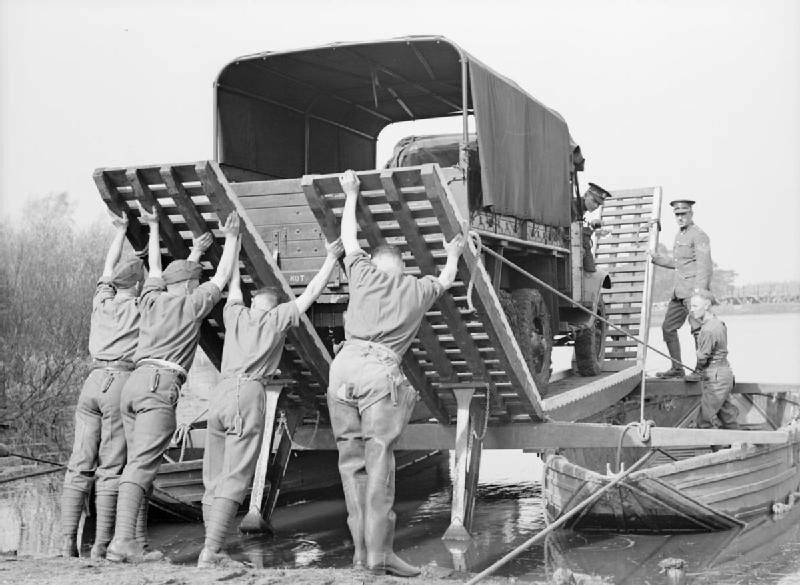
Folding Boat Equipment Raft with ramps
It was easy to create a cargo raft or ferry from two boats.
A cargo raft with ramps was assembled from two boats, which were interconnected by two wooden beams, laid and fixed across the boats along their entire width. The ramp conveyor belts were laid on these beams, and the belts were 14 feet (426,7 cm) long. The transoms were equipped with 9 feet (274,3 cm) lifting ramps.
Such a raft had a carrying capacity of three tons and could transport wheeled vehicles to the other side, which independently entered and exited the raft. This was convenient, since in some cases any engineering work to prepare the coastal strip was excluded. This means that the transfer of equipment could be carried out as soon as possible.
The raft was driven either by oars or by outboard motors. Also, using such a raft, it was possible to organize a ferry crossing. According to the regulations, the raft was assembled in five minutes. at night the standard doubled.
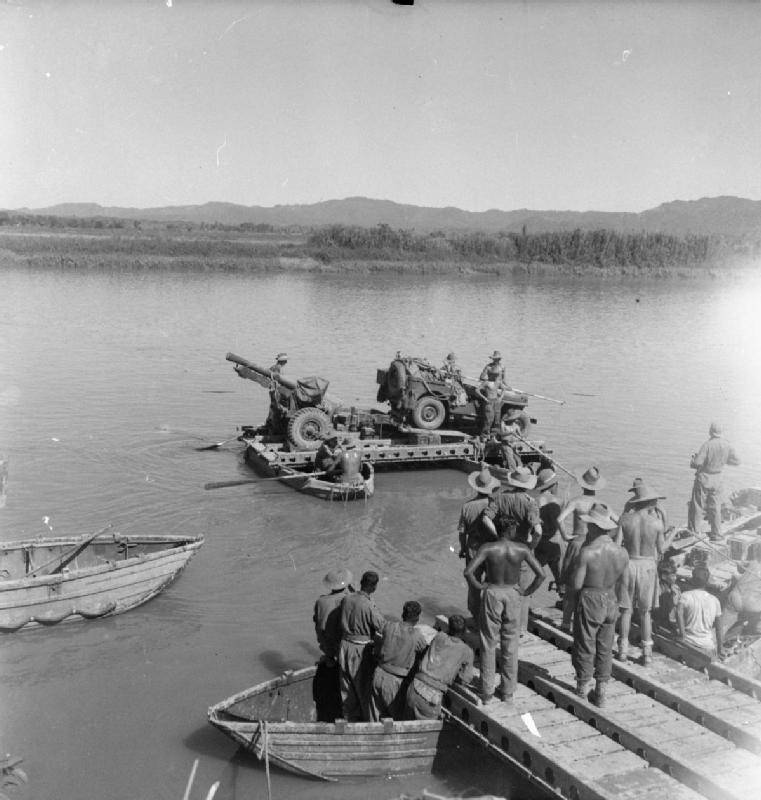
Deck raft FBE Mk. III, crossing a 25-pounder howitzer cannon and a jeep in Burma.
The second option for the construction of the raft provided for the arrangement of the deck.
The deck raft increased the carrying capacity to 4,5 tons (in the Mk. III version - up to 5,2 tons). The design also used two boats, but the deck was placed perpendicular to their length (in the version with ramps, transport belts went along the boats).
The deck decks were made of wood using Douglas fir. Despite the increase in carrying capacity, this option was less flexible and more difficult to operate. Since the loading and unloading of equipment required the presence of a pier or assembled ramps on both banks.
Several interconnected FBE rafts formed bridge spans, which, with the addition of overpasses, turned into a light ferry crossing. It was possible to increase the carrying capacity of the crossing by articulating the two boats.
The maximum lifting capacity of the pontoon bridges, assembled using the FBE Mark III kits, reached 9-10 tons. They had to withstand a fully loaded 3,5-ton truck and a 25-pound howitzer cannon with a tractor.
Since the landing craft was collapsible and collapsible, their transportation was simplified. For the transportation of folding boat equipment, special modifications of the Albion BY5 truck were usually used, each of which could carry three boats in a folded state. Additionally, it was possible to use wheeled trailers, also designed to carry three boats folded.
Collapsible boat equipment, developed in the interwar period, performed well during the Second World War. The equipment was produced throughout the war years without significant changes and remained in service even after the end of hostilities.
Among other things, even in the pre-war years, FBE kits were used in the UK and for civilian purposes. For example, during the flood in Fenland in 1937.
- Yuferev Sergey
- https://www.thinkdefence.co.uk/
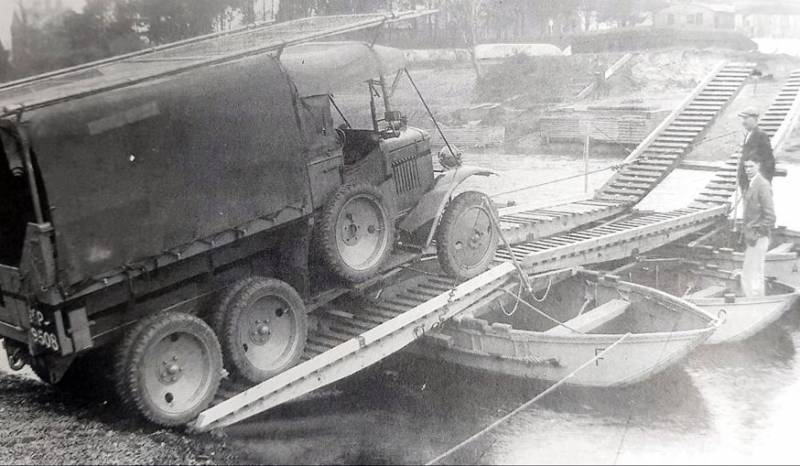
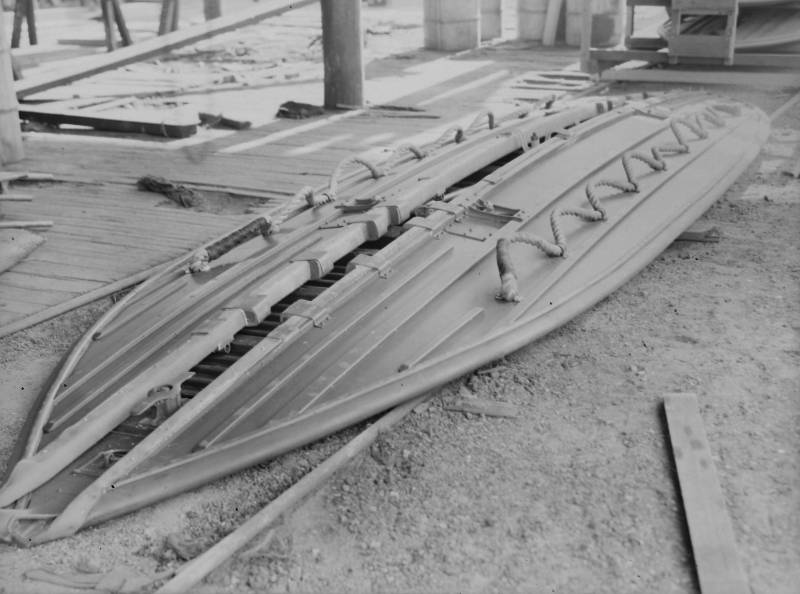
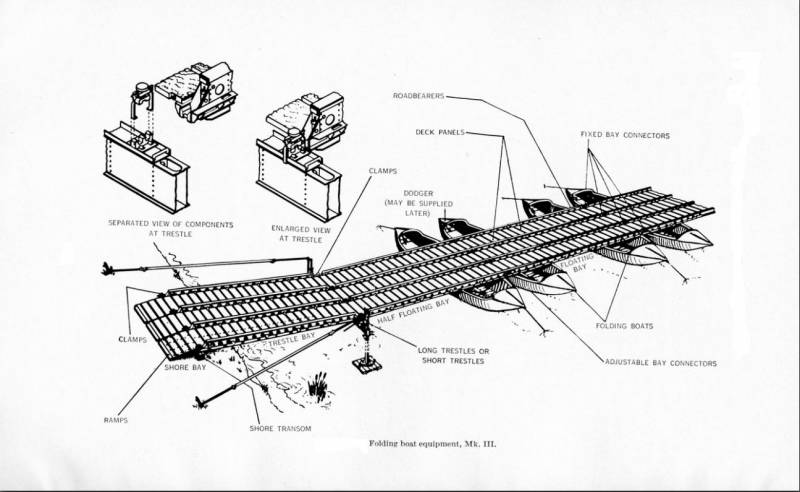
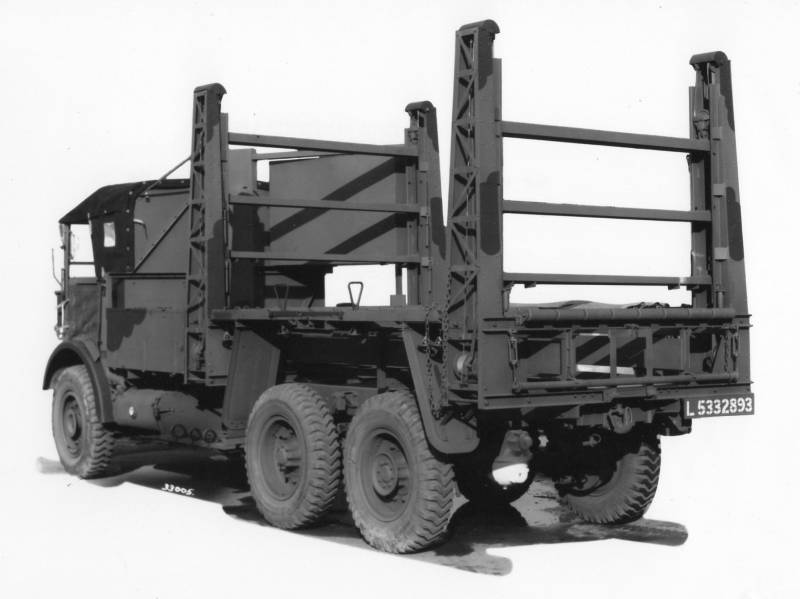
Information